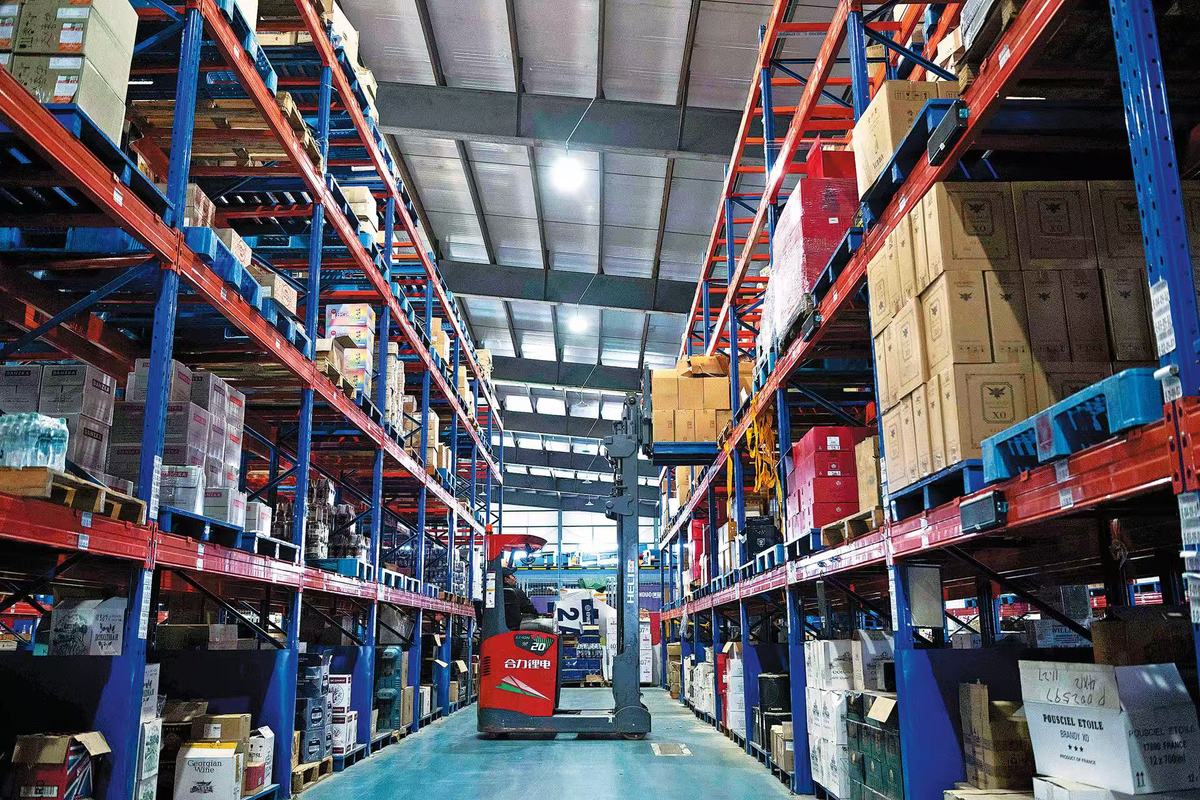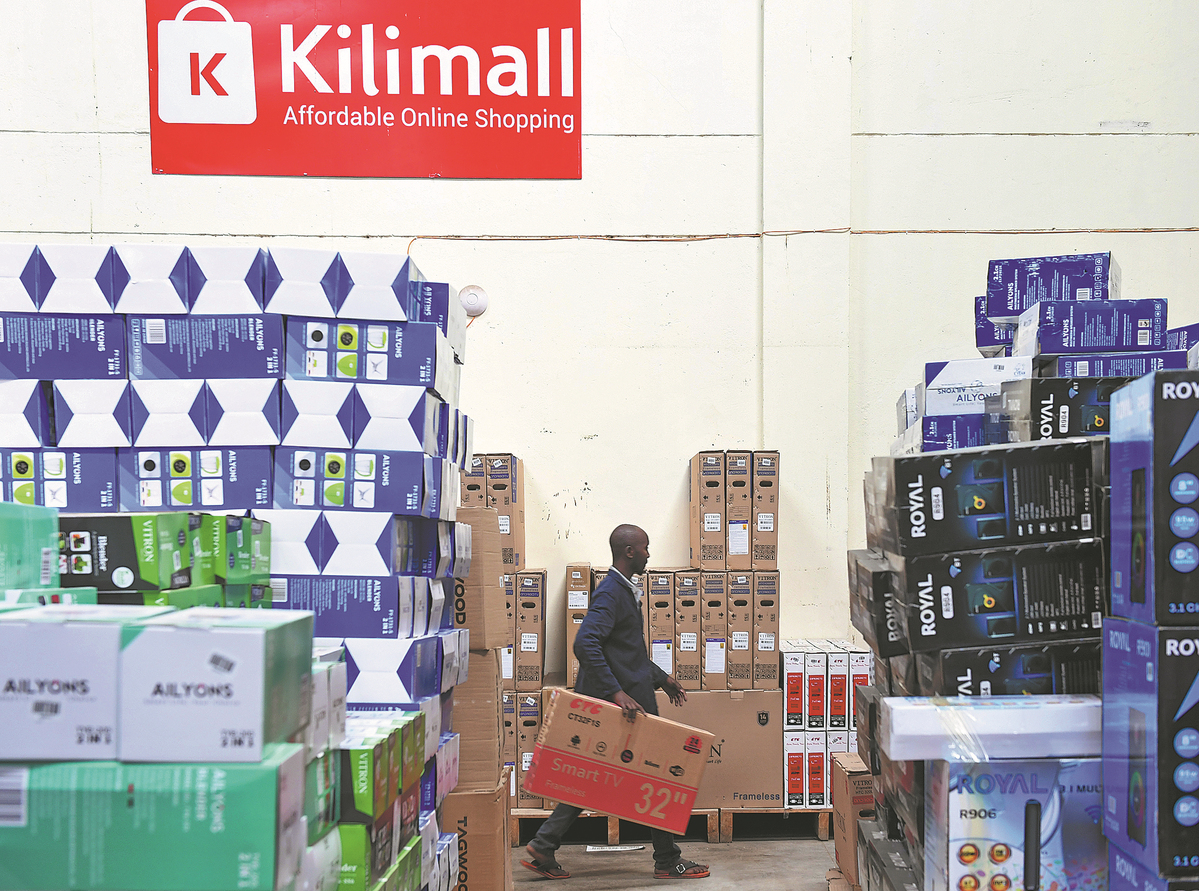Exporters reap benefits of overseas warehouses, improved logistics
Boost to global delivery infrastructure helping ensure Chinese goods reach international markets


At a warehouse in Sydney, Australia, intelligent sorting equipment is measuring the volume and weight of each parcel, and scanning the barcodes. All of the data is transmitted to the warehouse management system in real time.
By adopting high-precision sensors and advanced image processing technology, the equipment can identify, process and sort packages of different sizes, significantly enhancing efficiency and reducing the error rate of manual operations.
The warehouse, which is owned by Cainiao Group, the logistics arm of Chinese tech heavyweight Alibaba Group, stores millions of Chinese-made products such as 3D printers, electronic devices, household appliances and furniture that are gaining in popularity among Australian consumers.
Cutting-edge technologies such as artificial intelligence, the internet of things and robotic arms have also been deployed in the highly automated warehouse.
Once consumers place their orders, the warehouse responds promptly. Customers living in east coast Australian cities such as Melbourne are able to receive their parcels within two to three days, five or seven days faster than the traditional cross-border direct mail.
Experts said the establishment of intelligent overseas warehouses has greatly enhanced the efficiency of cross-border e-commerce logistics, shortened the delivery time and improved the user experience, while hedging against the impact of tariff hikes by the United States on China's foreign trade enterprises.
The move is vital in helping Chinese cross-border merchants expand their presence in overseas markets, lower their operational costs abroad and meet growing demand for reliable delivery services from local consumers, they added.
Agile approach
This year's Government Work Report stated that China will promote cross-border e-commerce by improving logistics services for cross-border delivery and boosting development of overseas warehouses.
As an important system supporting the development of cross-border e-commerce, overseas warehouses allow domestic retailers to transport commodities in bulk to overseas locations in advance, which is conducive to reducing shipping costs and facilitating the efficient delivery of goods to consumers abroad.

Chinese courier companies are ratcheting up efforts to build global delivery infrastructure such as overseas warehouses, expand their presence in overseas markets including Europe, North America and Southeast Asia, and boost delivery efficiency for cross-border parcels.
Cainiao Group recently announced the launch of a cross-border "green channel" designed to help the country's exporters expand their footprint abroad, a move that will improve the capacity of Chinese merchants to address challenges from external shocks.
Leveraging its network of over 40 overseas warehouses in Europe, the United States, Southeast Asia, and Australia, Cainiao said it aims to not only assist traders in diversifying their business operations globally, but also in building flexible and agile supply chain models by utilizing its warehouses in Vietnam and Mexico.
The company said exporters selling large furniture, 3D printers and auto parts will enjoy preferential prices, and can store their goods in the overseas warehouses free of charge for a maximum of 60 days.
Additionally, it will provide cross-border merchants with a range of AI-powered intelligent tools, including inventory monitoring and analysis, intelligent warehouse allocation and sales forecasting, to help them achieve intelligent inventory management.
In terms of transportation capacity and logistics resources, Cainiao will offer merchants a string of supportive measures, such as freight subsidies, prioritized warehousing guarantees and last-mile delivery.
Haven for exporters
Cainiao operates over 800,000 square meters of overseas warehouses and provides services in 18 countries and regions. The company is enhancing cross-border logistics capabilities and pledging to deliver global parcels within five working days. The service has expanded to 14 countries, including key markets such as Europe, the US and the Middle East.
"The construction of overseas warehouses will provide a safe haven for exporters, as this method effectively avoids cost increases caused by tariff fluctuation through stockpiling in advance and localized operations," said Hong Yong, an associate research fellow at the Chinese Academy of International Trade and Economic Cooperation.
It will help optimize logistics processes, enhance the competitiveness of Chinese merchants in the international market and ensure the stability and security of supply chains, Hong said.
Overseas warehouses will also help merchants better adapt to local markets, he added, while highlighting that through intelligent inventory management and data analysis, the merchants can flexibly adjust their sales strategies, respond quickly to market changes, and offset the negative effects brought on by the US tariff hikes.
The development of overseas warehouses has been high on the government's agenda. China will advance the construction of overseas warehouses and expand cross-border e-commerce exports to accelerate the cultivation of new growth drivers for foreign trade, according to a guideline issued by the Ministry of Commerce and other government departments last year.
Data from the Ministry of Commerce showed that the number of overseas warehouses has surpassed 2,500, covering a total area of over 30 million sq m. More than 1,800 are dedicated to serving the needs of cross-border e-commerce, with a combined area surpassing 22 million sq m.
Sector's solid growth
China's cross-border e-commerce sector has seen robust growth in recent years. The sector's imports and exports reached 2.63 trillion yuan ($360.6 billion) in 2024, an increase of 10.8 percent year-on-year, said the General Administration of Customs.
The construction of overseas warehouses will be conducive to lowering cross-border transportation costs, and helping exporters optimize inventory management and improve their response rate to orders, said Zhang Zhouping, an independent analyst who has been tracking the cross-border e-commerce sector for more than a decade.
Zhang said shipping goods in bulk to overseas warehouses in advance will allow foreign trade companies to adjust logistics and distribution strategies in a timely way based on market demand, and cushion the impact of policy changes in a particular market.
He noted that the move will ultimately enhance the resilience and anti-risk capacities of cross-border merchants, providing an important "buffer space" for exporters in the increasingly complex international trade environment.
"Overseas warehouses serve as vital infrastructure that boost growth in the nation's cross-border e-commerce sector," Zhang said, adding such facilities enable quicker customs clearance, faster delivery, and lower costs, while safeguarding the stability and security of supply chains.
Robust supply chain
JD Logistics, the logistics arm of Chinese e-commerce giant JD, operates a robust international supply chain network which includes overseas warehouses and international express delivery services that span Europe, Asia, the Middle East and North America, facilitating end-to-end fulfillment capabilities.
The company launched its third warehouse in Poland in March, the second such facility in the capital Warsaw, marking a key pillar of the company's long-term strategy in Europe. The newly opened warehouse is nearly 10,000 sq m and stores commodities like consumer electronics and home appliances. It is expected to further enhance cross-border supply chain efficiency.
JD Logistics has also inked a strategic partnership with France-based Geopost, Europe's largest international parcel delivery network, to bolster express services between China and Europe.
Its overseas warehousing operations offer same-day fulfillment services in key European markets, including Germany, the Netherlands, France, the United Kingdom, Spain and Poland, while ensuring delivery in two to three days across 90 percent of regions in the US.
Currently, JD Logistics owns over 100 overseas warehouses, bonded warehouses, and international direct-mail facilities spanning more than 1 million sq m.

It plans to double its overseas warehouse capacity this year, and build facilities in the Americas, Europe, Southeast Asia, Australia, and the Middle East, where Chinese enterprises are expanding their businesses with e-commerce penetration rates continuing to rise.
"Chinese logistics companies' intensified push to invest in global delivery networks will not only help enhance the competitiveness of Chinese foreign trade enterprises and bolster their sales in overseas markets, but also introduce a large number of overseas products to Chinese consumers," said Lu Zhenwang, CEO of Wanqing Consultancy, which is based in Shanghai.
Cargo fleet expanded
Chinese logistics firms have also invested heavily in providing air cargo services. SF Airlines, a subsidiary of logistics company SF Holding, has increased its fleet to 90 freighters, a significant step in strengthening its service capacity in the global market.
The expansion of the scale and improved structure of its transport capacity will support SF Airlines in its endeavors to broaden its air-cargo transport route network, which reaches over 100 destinations at home and abroad. It also enhances the airline's services for logistics supply chains and customers, the company added.
Han Tao, a researcher at the China Air Transport Association, said the operation of cargo aircraft serves as a vital supplement to logistics companies' supply chain and delivery system, as airfreight transportation can forge greater synergy with warehousing and sorting centers to build an integrated logistics and delivery network.
The move will also help enterprises boost long-haul freight capacity, improve overseas logistics networks and further improve cross-border delivery efficiency, Han added.
fanfeifei@chinadaily.com.cn
























